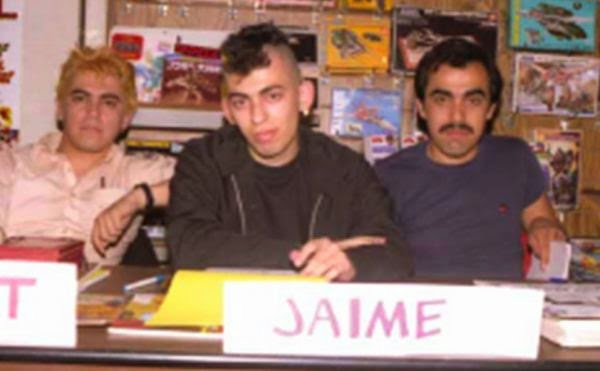Charles Jencks wrote that one of the liberating aspects of post-modernism for an architect was that it meant you were now free to pick and choose in terms of technique and style from the entire history of architecture--as long as you realized that your work could no longer embody the ideologies of those earlier styles. This is the notion of pastiche. It's something I often think of when I see the work of young abstractionists here in Houston; artists like Geoff Hippenstiel or Stephanie Toppin. Their work resembles in some ways the work of abstract expressionist painters of the 40s and 50s. But whatever else the classic abstract expressionists were doing, they were carrying the mission of modernism forward with the formal aspects of their paintings. Obviously, that is not something that be said of any painter working in that idiom today. Just like Don Quixote in Borges' story "Pierre Menard, Author of the Quixote," the meaning of work that looks similar becomes changed depending on the context.
All this is a preface to the work of Trey Egan, on view now at McMurtrey Gallery through August 11. Egan appears to be quite young--he just got his BFA in 2008 and is working on his MFA now. But when one looks at his work, there is an unmistakable feel of painting from the 1950s.

Trey Egan, Fragmented Ceremony:Systematic Reveal, 2012, oil on canvas, 70" x 52"
The brush strokes are vigorous and emphatic. When I look at a painting like Fragmented Ceremony: Systematic Reveal, I see echoes of Willem De Kooning in both the handling of the paint and the palette. There is a choppiness to the work as if Egan is attacking the canvas. The areas of white, black and tan appear to have been made with large brushstrokes, while the pinks and red are smaller and more agitated. There is a tension between these areas.

Trey Egan, Sequence Compression; Diabolic Overthrow, 2012, oil on canvas, 52" x 70"
That tension is more apparent in Sequence Compression; Diabolic Overthrow, where a violent mass of red, black and white (which reminds me of blood and meat) are foregrounded against calm areas of blue and yellow. These are works that have emotional content, and that may be the best explanation for why an artist as young as Egan chooses to work in an idiom that peaked more than 50 years ago. It's an idiom well suited for expressing emotion. Whatever technical and formal elements there are in this painting, what comes across is anger or agitation.

Trey Egan, Everything Shows Me Its Face, 2012, oil on canvas, 70" x 52"
Everything Shows Me Its Face has a composition that just barely reaches the edge of the canvas. That fact, and the pink and grey palette, remind me of Philip Guston's abstractions. Egan even seems to be referencing Guston's nervous, skittery brush work. So that begs the question: is this a pastiche? Is Egan, in a post-modern way, making a comment on or engaging in a dialogue with Guston? Is Egan in the process of working through his relationship with Guston and De Kooning? If so, I approve--this is a worthwhile activity for a young artist. And the results are quite nice.
But one hopes that his own voice will become more pronounced as he symbolically displaces his artistic fathers. In short, his best work probably is still ahead of him.

Trey Egan, Pressure Code, 2012, oil on canvas, 47" x 36"











































